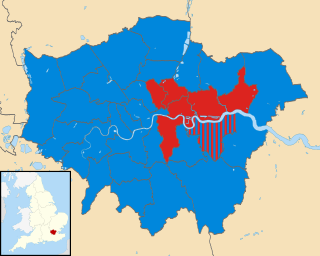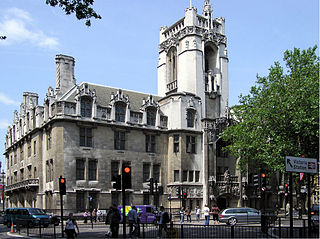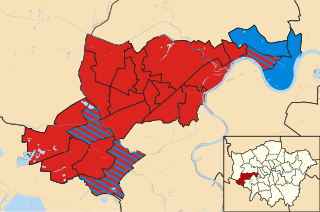
The Greater London Council (GLC) was the top-tier local government administrative body for Greater London from 1965 to 1986. It replaced the earlier London County Council (LCC) which had covered a much smaller area. The GLC was dissolved in 1986 by the Local Government Act 1985 and its powers were devolved to the London boroughs and other entities. A new administrative body, known as the Greater London Authority (GLA), was established in 2000.

The Metropolitan Borough of Hackney was a metropolitan borough of the County of London from 1900 to 1965. Its area became part of the London Borough of Hackney.
The first election to the Greater London Council (GLC) was held on 9 April 1964.

The second election to the Greater London Council was held on 13 April 1967, and saw the first Conservative victory for a London-wide authority since 1931.

The third election to the Greater London Council was held on 9 April 1970 and saw a Conservative victory with a reduced majority.

The fourth election to the Greater London Council (GLC) was held on 12 April 1973. Labour won a large majority of 58 seats to 32 for the Conservatives; the Liberals also won their first two seats on the council.

Middlesex County Council was the principal local government body in the administrative county of Middlesex from 1889 to 1965.
Camden London Borough Council in London, England is elected every four years. Since the last boundary changes in 2022, 55 councillors have been elected from 20 wards.

Local government elections were held in the thirty-two London boroughs on Thursday 9 May 1968. Polling stations were open between 8am and 9pm.
The 1964 Southwark Council election took place on 7 May 1964 to elect members of Southwark London Borough Council in London, England. The whole council was up for election and the Labour party gained control of the council.
The 1964 Lambeth Council election took place on 7 May 1964 to elect members of Lambeth London Borough Council in London, England. The whole council was up for election and the Labour party gained control of the council. The election is notable for being the first one ever fought by John Major.
The 1964 Lewisham Council election took place on 7 May 1964 to elect members of Lewisham London Borough Council in London, England. The whole council was up for election and the Labour Party gained control of the council.
The 1964 Barnet Council election took place on 7 May 1964 to elect members of Barnet London Borough Council in London, England. The whole council was up for election and the Conservative party gained control of the council.
The 1964 Havering Council election took place on 7 May 1964 to elect members of Havering London Borough Council in London, England. The whole council was up for election and the council went into no overall control.
The 1968 Havering Council election took place on 9 May 1968 to elect members of Havering London Borough Council in London, England. The whole council was up for election and the Conservative Party gained overall control of the council for the first time.
The 1971 Havering Council election took place on 13 May 1971 to elect members of Havering London Borough Council in London, England. The whole council was up for election and the Labour Party gained overall control of the council.
The 1974 Havering Council election took place on 2 May 1974 to elect members of Havering London Borough Council in London, England. The whole council was up for election and the council went in no overall control.
Elections for the London Borough of Merton were held on 4 May 1978 to elect members of Merton London Borough Council in London, England. This was on the same day as other local elections in England and Scotland.

The 2022 Hounslow London Borough Council election took place on 5 May 2022. All 62 members of Hounslow London Borough Council were elected. The elections took place alongside local elections in the other London boroughs and elections to local authorities across the United Kingdom.

The 2022 Lambeth London Borough Council election took place on 5 May 2022. All 63 members of Lambeth London Borough Council were elected. The elections took place alongside local elections in the other London boroughs and elections to local authorities across the United Kingdom.











